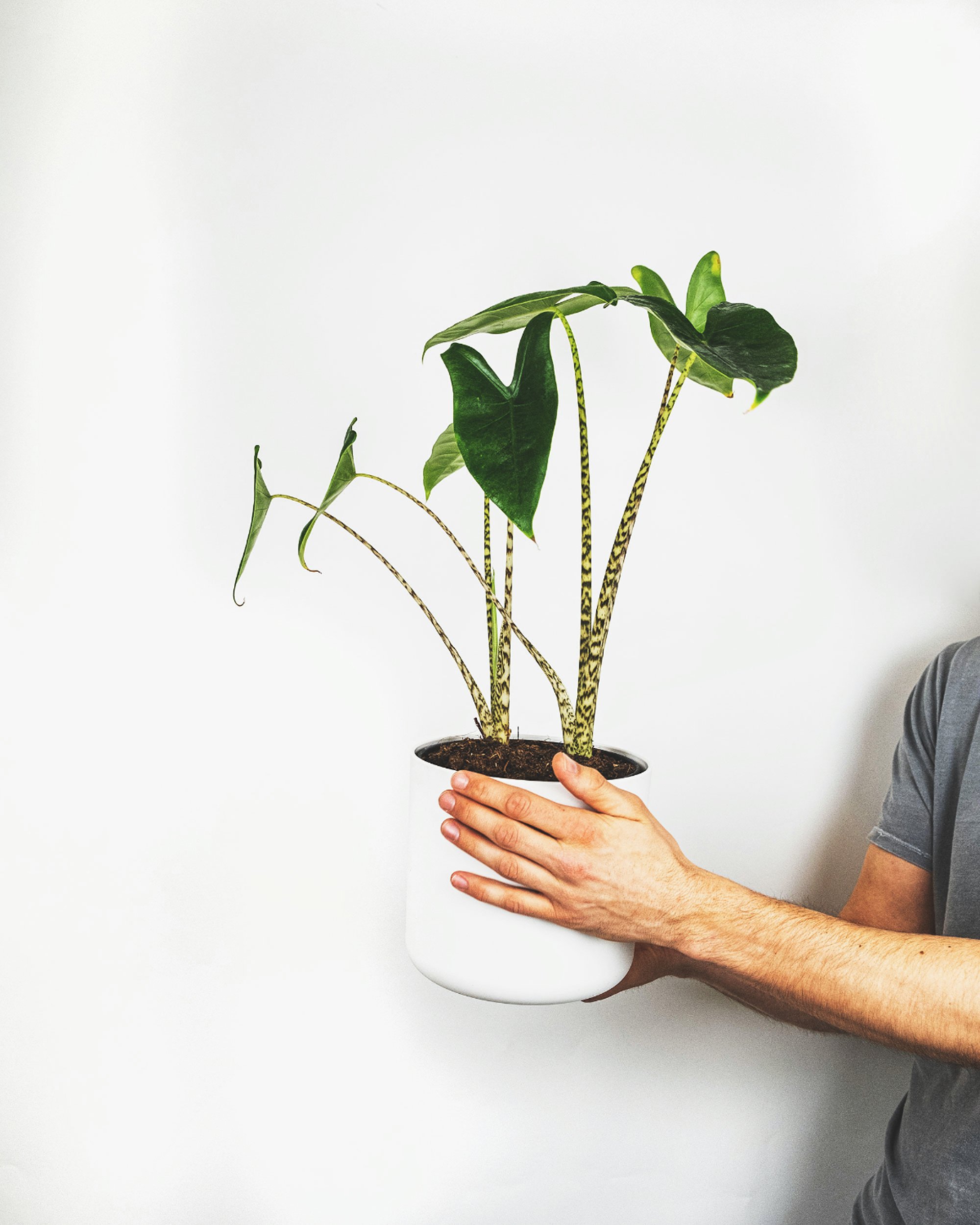Plant Profile
Alocasia Zebrina
a.k.a. Elephant Ear (Tiger)
Native to the warm and humid conditions of Phillipine rainforests, the Alocasia Zebrina is a SHOWSTOPPER, known for its broad, arrow shaped leaves, and ‘zebra striped’ petioles, or stalks. At maturity, your Alocasia Zebrina can grow to 3 ft tall and wide. The Zebrina is relatively easy to look after once you nail the correct conditions for it, so check out our detailed care guide below.
Top Tips
✔ Clean your Zebrina’s leaves by wiping them with a damp cloth to remove dust and pests, and to allow the plant to photosynthesise more efficiently.
✔ Aerate the soil before watering, to help release moisture.
✔ Alocasia’s will drop some of their leaves as they go into winter to conserve their energy - don’t panic!
Plant Care
-
Mirroring its natural habitat on the forest floor beneath the canopy, the Alocasia Zebrina thrives in bright, indirect light - Direct light will scorch the leaves. Rotate your Zebrina 90 Degrees regularly to ensure even exposure to light and even growth.
-
Alocasia Zebrina’s prefer their soil a little more on the drier side, and overwatering is its biggest killer. Its thick stems hold a lot of moisture, however before you water, lift the pot to get a feel for its ‘dry weight’. This may take some practice, but you will become familiar with how the plant feels when it needs a water. Rainwater or warm distilled water is so much better for this plant than water straight from the tap if possible.
-
High humidity is key for healthy growth of your Zebrina, but don’t mist the leaves directly. Instead, mist the air around the plant, position it near other plants, place on a pebble tray with water, or position in a room with a humidifier.
-
Feed your Zebrina once a month during the warm spring / summer months, and use a slow release, organic fertiliser where possible to avoid salt residue build up from synthetic blends. Do not fertilise in Autumn / Winter.
-
Your Zebrina won’t react well to cold (temps below 15 C) or draughts, and sudden drops in temperature will result in dormancy and leaf loss. Best growth will occur between 18 C to 28 C.
-
Toxic if ingested - keep out of reach of children and pets.
-
The Zebrina is best propagated by division, during its growing season of Spring/Summer and ideally when you are re-potting.
-
Avoid re-potting until your plant gets very rootbound and when re-potting your Alocasia, use a well draining soil.



Quick plant check up
BROWN LEAF TIPS
Humidity may be too low. Try increasing the humidity levels by using a pebble tray, humidifier or misting regularly around the plant (not directly onto the leaves)
YELLOWING LEAVES
A sign of over watering. Make sure you allow the top 2-3 inches of soil to dry out between watering. Cut back more so in winter.
DROOPING STEMS
A sign of underwatering, as it indicates the stems aren’t full of water anymore. The stems will raise again once they have had a drink.





